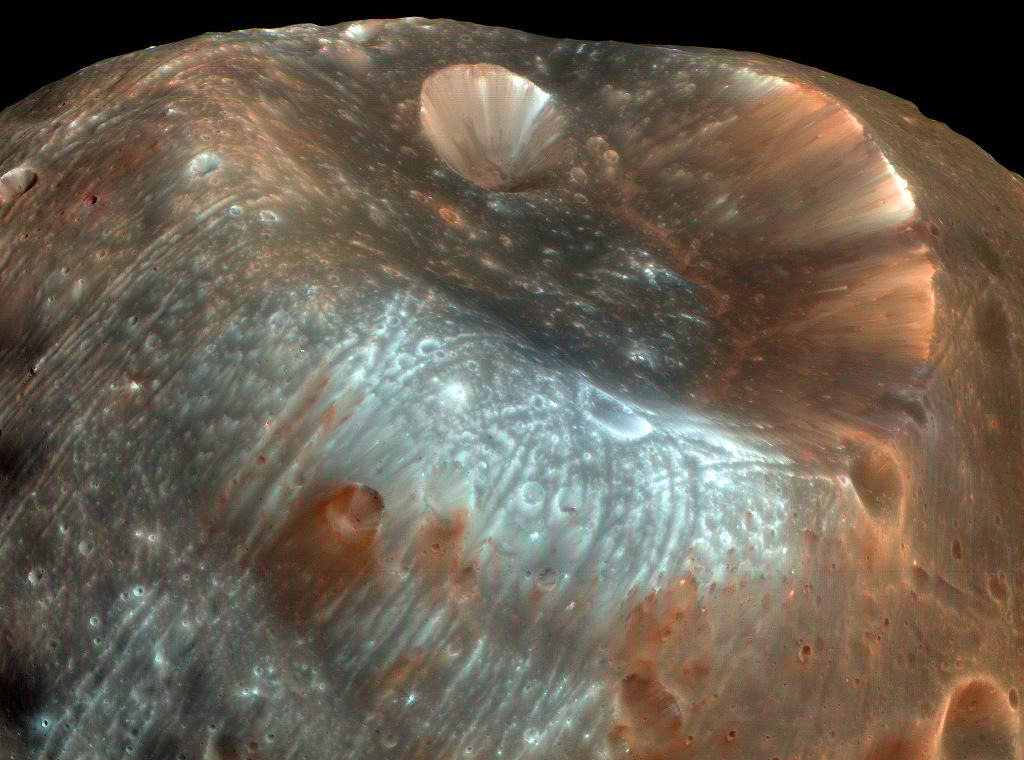2023年7月8日
Stickney Crater
Image Credit: HiRISE, MRO, LPL (U. Arizona), NASA
Explanation: Stickney Crater, the largest crater on the martian moon Phobos, is named for Chloe Angeline Stickney Hall, mathematician and wife of astronomer Asaph Hall. Asaph Hall discovered both the Red Planet’s moons in 1877. Over 9 kilometers across, Stickney is nearly half the diameter of Phobos itself, so large that the impact that blasted out the crater likely came close to shattering the tiny moon. This enhanced-color image of Stickney and surroundings was recorded by the HiRISE camera onboard the Mars Reconnaissance Orbiter as it passed within some six thousand kilometers of Phobos in March of 2008. Even though the surface gravity of asteroid-like Phobos is less than 1/1000th Earth’s gravity, streaks suggest loose material slid down inside the crater walls over time. Light bluish regions near the crater’s rim could indicate a relatively freshly exposed surface. The origin of the curious grooves along the surface is mysterious but may be related to tidal stresses experienced by close-orbiting Phobos or the crater-forming impact itself.
Tomorrow’s picture: doomed star
史蒂克妮坑
影像提供: HiRISE, MRO, LPL (U. Arizona), NASA
说明: 史蒂克妮坑是火卫一最大的撞击坑,它是因数学家Chloe Angeline Stickney Hall而得名,而她更是在1877年发现火星二颗卫星的天文学家霍耳之妻子。史蒂克妮陨石坑的宽度超过9公里,几乎是火卫一直径之半,因此造成这个陨石坑的撞击,可能也几乎让这颗卫星粉身碎骨。这张呈现此撞击坑及其周围景观、色泽经过强化的影像,是在2008年由火星探勘号上的HiRISE相机,以大约6万公里的距离掠过火卫一时所拍摄的。虽然形似小行星的火卫一,其表面重力不到地球的千分之一,但陨石坑内的条痕,可能是长久以来松散物质滑落坑底所造成的。而靠近陨石坑边墙的淡蓝区域,应是较近期曝露出的表面。影像中这些有趣但起源不明的槽沟,或许和在近火星轨道上的火卫一所受到的潮汐力或造成此坑的撞击有关。
明日的图片: doomed star



